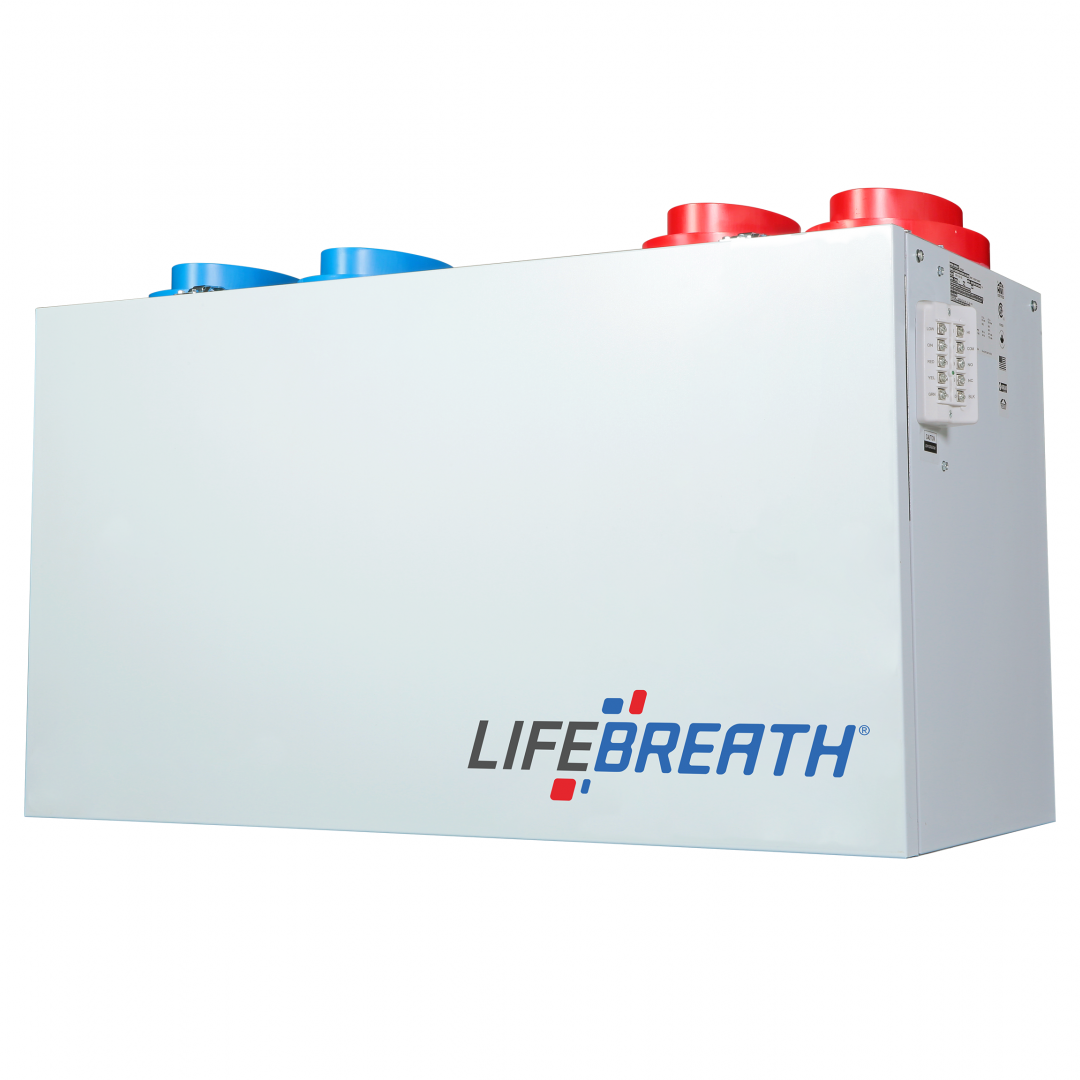Imagine stepping inside your home and taking a deep breath, feeling truly refreshed, even when the outside world is filled with pollen or just a bit too stuffy. That good feeling, that sense of clean air moving around, is something many of us are starting to want more of, especially as our houses become more sealed up and efficient. It's almost like having a secret helper quietly making your indoor air much nicer, and doing it without making your energy bills jump.
You might be wondering how that works, or perhaps you’ve heard a little about special systems that handle your home's air. So, when folks search for things like "erv hurd wikipedia" to figure out what an ERV is, they're often looking for a straightforward explanation about these useful pieces of equipment. They're trying to figure out how these devices keep your living spaces feeling comfortable and healthy, without letting all your carefully controlled indoor air just escape.
Really, these systems are a big part of making sure the air you breathe inside your home is as good as it can be. They help bring in outside air that's been cleaned up a bit, while also making sure you don't lose all the warm or cool air you've already paid to create. It's a pretty smart way, in some respects, to keep things balanced and pleasant inside your house, all the time.
Table of Contents
- What Exactly Are ERV Systems?
- Why Do Homes Need ERVs - A Look at Erv Hurd Wikipedia
- How Do ERVs Keep Things Comfortable?
- What Wikipedia Might Say About ERV Energy Savings
- Who Makes These Systems and What Hurdles Have They Overcome?
- Choosing the Right ERV for Your Place - Erv Hurd Wikipedia Tips
- Modern Homes and Their Air Needs
- Getting the Full Picture on ERVs
What Exactly Are ERV Systems?
When we talk about energy recovery ventilators, often called ERVs, we're really talking about a clever piece of equipment that helps your home breathe. These systems, you know, are about getting fresh air inside your living space while keeping things just right and helping you save on your power bills. They are, in a way, like the lungs of your house, bringing in what's good and getting rid of what's not.
An ERV is a mechanical setup that works to swap the stale air from inside your home with a fresh, clean supply from the outside. It's a rather simple idea, but it makes a big difference. Think of it as a constant, gentle exchange happening in the background, making sure your home always feels like it has enough clean air to go around. This is especially true for homes that are built very tightly sealed, where natural air movement might be quite limited, so it's a useful thing to have.
These devices are, actually, quite important for keeping a healthier atmosphere inside your house. They don't just move air; they do it in a way that helps keep the air quality up to snuff. So, if you're ever looking up "erv hurd wikipedia" to get a quick grasp on what these things are, you'll likely find out they're all about making your home's air better, and they do it rather quietly and efficiently.
Why Do Homes Need ERVs - A Look at Erv Hurd Wikipedia
You might ask yourself, why do homes even need something like an ERV? Well, as a matter of fact, our homes today are built to be much more airtight than they used to be. This is great for keeping warmth in during winter and coolness in during summer, which saves money. But, it also means that indoor air can get a bit stuffy, full of things like cooking smells, pet dander, or even just the air we breathe out, which has carbon dioxide.
ERVs step in to solve this problem by making sure your home gets a steady supply of new, clean air without you having to open windows and let all your expensive conditioned air fly out. It's pretty much a continuous process that works behind the scenes. This is especially important for maintaining a truly healthier indoor setting in houses, where stale air can otherwise build up.
They are, basically, essential for a good home environment. When you check out resources, maybe even something like "erv hurd wikipedia," you'll see that these systems are considered a key part of making sure the air you and your family breathe is consistently fresh. This helps reduce indoor air pollutants and can make a big difference for anyone with sensitivities to common indoor irritants, so that's a plus.
How Do ERVs Keep Things Comfortable?
One of the neatest things about ERVs is how they help keep your home feeling just right, temperature-wise. They don't just swap air; they also swap some of the heat or coolness between the outgoing and incoming air streams. So, if it's hot outside and you're running your air conditioner, the ERV takes the heat from the fresh incoming air and transfers it to the stale outgoing air. This means the air coming into your house is already a bit cooler, requiring less work from your AC unit, which is pretty smart.
Similarly, when it's cold outside, the ERV takes the warmth from your indoor air and uses it to warm up the chilly air coming in. This means the fresh air entering your home isn't freezing cold, making your heater's job a little easier. This whole process helps to maintain indoor comfort, making sure your home stays at a pleasant temperature without huge energy swings, you know, which is nice.
This clever method means you get all the benefits of fresh air without sacrificing the cozy temperature you've worked to create inside. It’s about keeping a steady, comfortable feel throughout your living spaces, no matter what the weather is doing outside. That, in fact, is a big reason why these systems are becoming so popular for modern homes.
What Wikipedia Might Say About ERV Energy Savings
When you're looking up "erv hurd wikipedia" or any other information source, you'll find that one of the biggest talking points about ERVs is their ability to help you save on energy costs. They're designed to recover energy from the air that's being sent out of your home. This means less wasted energy, which translates directly into lower utility bills for you, so that's a definite benefit.
The core idea is simple: why throw away the energy you've already used to heat or cool your home? An ERV captures a good portion of that energy and puts it to use pre-conditioning the fresh air coming in. This reduces the burden on your heating and cooling systems, meaning they don't have to work as hard or as long to get your home to the desired temperature. It's a rather efficient way to handle air movement.
For example, in a warm, muggy climate, an ERV can pull moisture from the incoming humid air, helping to keep your home from feeling sticky and damp, and again, reducing the work your air conditioner has to do. This efficient ventilation means you can enjoy a healthier home environment without seeing your energy bills climb. It’s actually a really practical way to manage your home's air quality and budget at the same time.
Who Makes These Systems and What Hurdles Have They Overcome?
Companies like RenewAire have been leaders in this area for a very long time, over four decades, in fact. They've been pioneers in making indoor air better through these energy recovery ventilation technologies. Their long history means they've seen the technology grow and adapt, constantly working to make these systems more effective and easier for homes to use. They've certainly overcome many initial challenges in making this technology widespread.
Other big names, like LG HVAC, also make energy recovery ventilation systems. Their offerings often include advanced features like really good air filtering, ways to keep carbon dioxide levels in check, and even systems that link up with your air conditioning to make everything work together as smoothly as possible. These features are all about making the air inside your home cleaner and helping you spend less on energy, which is a good thing.
Lennox is another company that provides ERVs to help improve indoor air quality. Their systems are known for being quite good at ventilating air, especially in places that are warm and humid. This helps create a much healthier home environment, even when the outside air is heavy and damp. It shows that manufacturers are always working to refine these systems, overcoming the "hurdles" of different climates and home types to make them widely useful, you know.
Choosing the Right ERV for Your Place - Erv Hurd Wikipedia Tips
Deciding on the best energy recovery ventilator or even a heat recovery ventilator (HRV) for your house is, in some respects, simpler now than it once was. This is because groups like the Home Ventilating Institute (HVI) have put together and shared new guidelines. These guidelines help homeowners and builders pick the right system for their specific needs, making the whole process less confusing. It's like having a clear roadmap to follow.
These guidelines from HVI cover things that help you figure out what kind of system would work best for your home's size, climate, and how many people live there. They help you avoid picking something too small or too big, ensuring you get a system that performs just as it should. So, if you're ever looking up "erv hurd wikipedia" to find advice on selection, you'll likely find references to these helpful standards.
It's really about making an informed choice, so you get the most out of your investment in better home air. Knowing that there are established standards and information available makes the selection process much less of a guessing game. This way, you can be pretty confident that the system you choose will do a good job of keeping your home's air fresh and comfortable.
Modern Homes and Their Air Needs
As the way we build houses and make home improvements keeps changing, energy recovery ventilators are, basically, becoming a really important answer for today's homes. Newer houses are often built to be very tightly sealed to save energy, which is good for your wallet but can sometimes mean the air inside doesn't move around as much as it should. This is where ERVs step in to help.
An ERV is pretty much standard equipment for these tightly sealed homes nowadays. It works to move conditioned air around, so you can breathe easily and comfortably. Without an ERV, the air in these homes can get stale quickly, leading to a build-up of indoor pollutants and a generally less pleasant feeling. So, they play a pretty crucial role in modern building practices.
These systems are a key part of making sure that homes that are super energy-efficient are also super healthy and comfortable to live in. They show how building science is evolving to meet the needs of people who want both a green home and fresh, clean air. It's about getting the best of both worlds, really, for a happy and healthy living space.
Getting the Full Picture on ERVs
Energy recovery ventilators are about giving you fresh air, keeping your home comfortable, and helping to lower your energy bills. These systems are really important for having a healthier indoor setting in houses. They bring in fresh air while also getting back energy that would otherwise be lost.
An ERV is a mechanical system that swaps stale indoor air for fresh, cleaned air from outside. Companies like RenewAire have been working on this for a long time, over 40 years. ERVs come in a few different styles, and choosing the right one is easier now thanks to new guidelines from the Home Ventilating Institute (HVI).
As homes get more modern and sealed up, ERVs are becoming a very necessary solution. Systems from companies like LG HVAC can make indoor air better, cut down on energy costs, and offer features like better filtering and CO2 control. An ERV is pretty much standard for today's tightly built homes, moving conditioned air so you can breathe well. Lennox also makes ERVs that are good at ventilating air, especially in warm, humid places, helping to make your home environment healthier.


